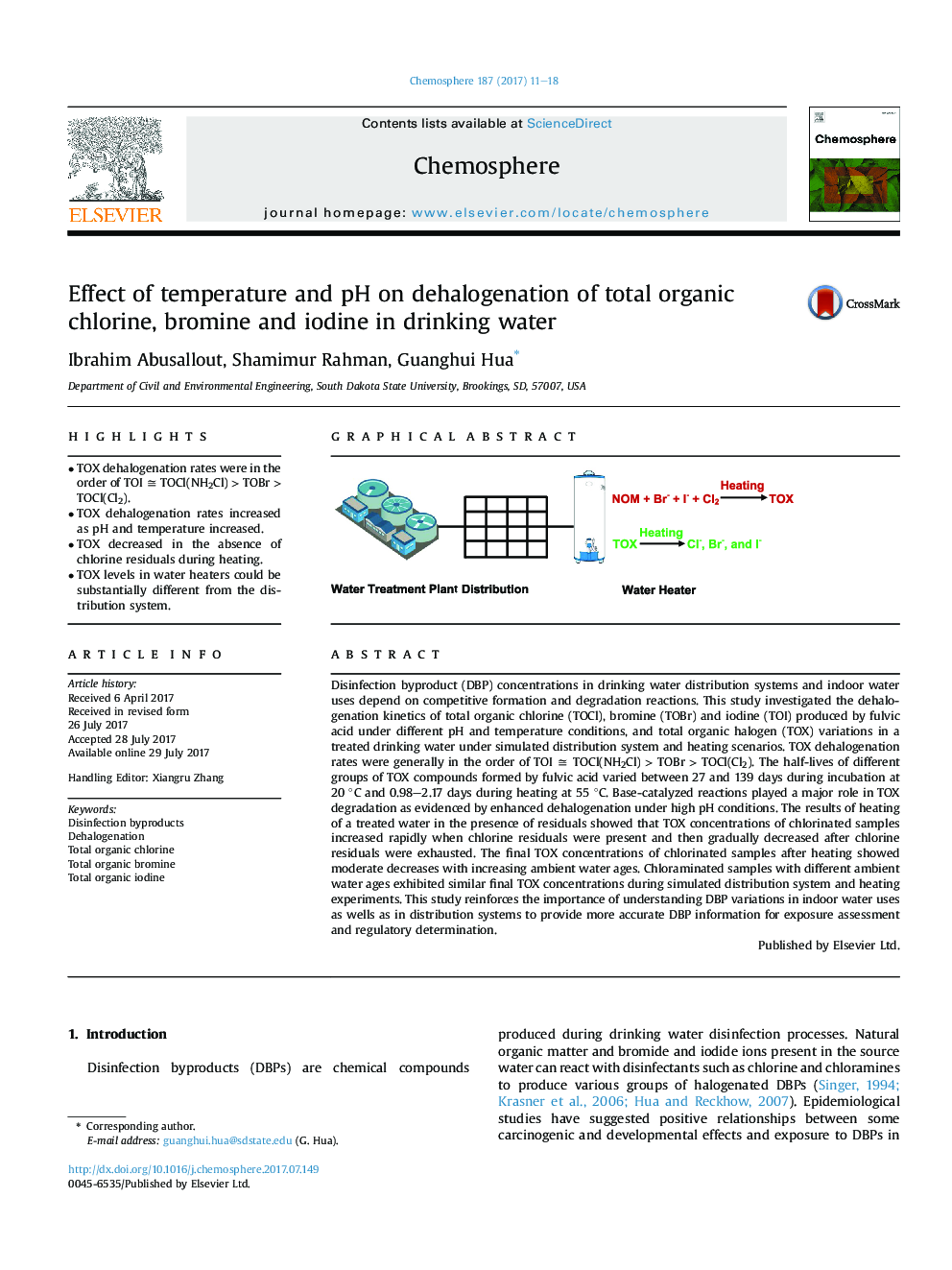| کد مقاله | کد نشریه | سال انتشار | مقاله انگلیسی | نسخه تمام متن |
|---|---|---|---|---|
| 5746449 | 1618784 | 2017 | 8 صفحه PDF | دانلود رایگان |

- TOX dehalogenation rates were in the order of TOI â
TOCl(NH2Cl) > TOBr > TOCl(Cl2).
- TOX dehalogenation rates increased as pH and temperature increased.
- TOX decreased in the absence of chlorine residuals during heating.
- TOX levels in water heaters could be substantially different from the distribution system.
Disinfection byproduct (DBP) concentrations in drinking water distribution systems and indoor water uses depend on competitive formation and degradation reactions. This study investigated the dehalogenation kinetics of total organic chlorine (TOCl), bromine (TOBr) and iodine (TOI) produced by fulvic acid under different pH and temperature conditions, and total organic halogen (TOX) variations in a treated drinking water under simulated distribution system and heating scenarios. TOX dehalogenation rates were generally in the order of TOI â  TOCl(NH2Cl) > TOBr > TOCl(Cl2). The half-lives of different groups of TOX compounds formed by fulvic acid varied between 27 and 139 days during incubation at 20 °C and 0.98-2.17 days during heating at 55 °C. Base-catalyzed reactions played a major role in TOX degradation as evidenced by enhanced dehalogenation under high pH conditions. The results of heating of a treated water in the presence of residuals showed that TOX concentrations of chlorinated samples increased rapidly when chlorine residuals were present and then gradually decreased after chlorine residuals were exhausted. The final TOX concentrations of chlorinated samples after heating showed moderate decreases with increasing ambient water ages. Chloraminated samples with different ambient water ages exhibited similar final TOX concentrations during simulated distribution system and heating experiments. This study reinforces the importance of understanding DBP variations in indoor water uses as wells as in distribution systems to provide more accurate DBP information for exposure assessment and regulatory determination.
157
Journal: Chemosphere - Volume 187, November 2017, Pages 11-18